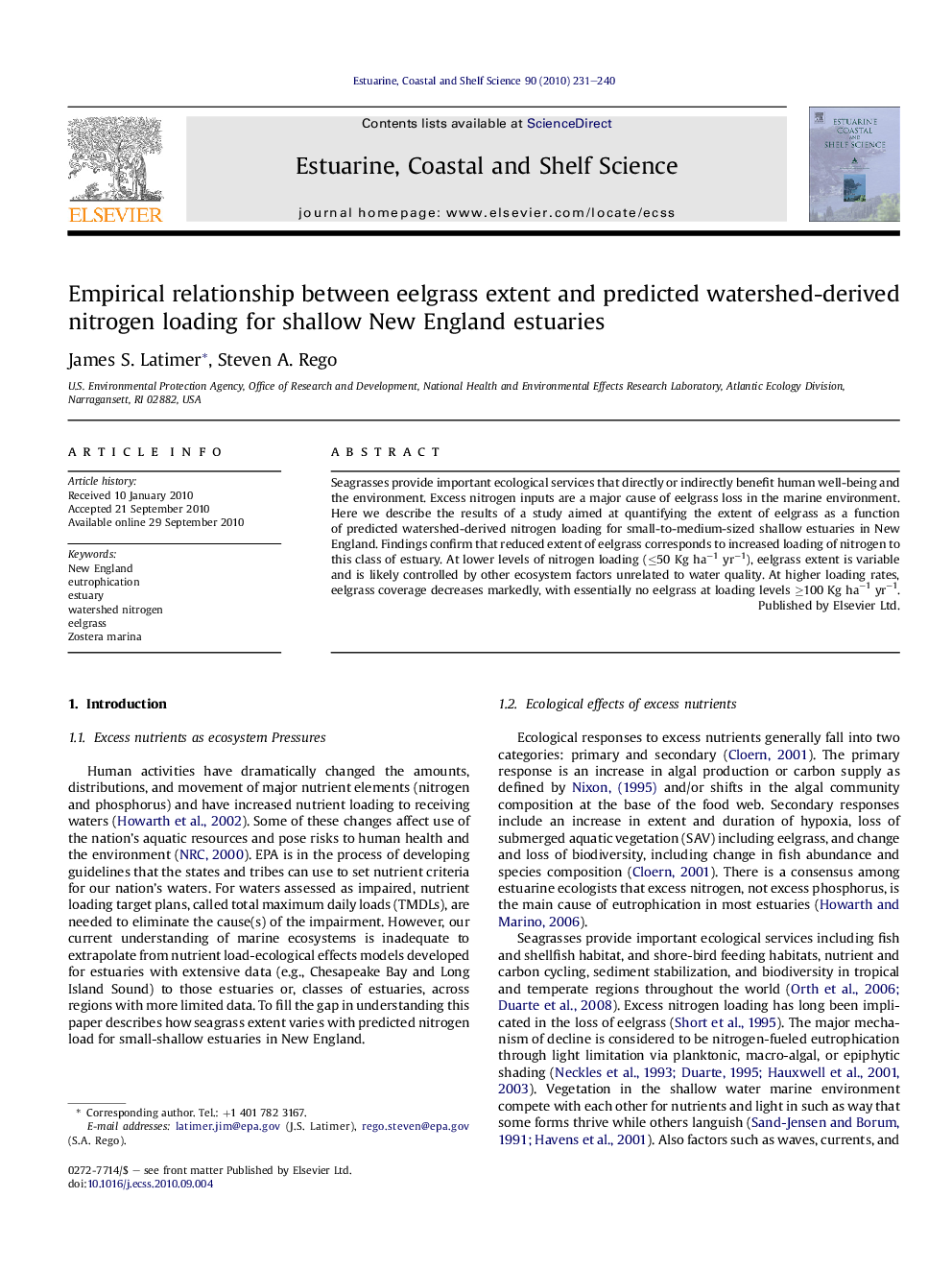| Article ID | Journal | Published Year | Pages | File Type |
|---|---|---|---|---|
| 4540649 | Estuarine, Coastal and Shelf Science | 2010 | 10 Pages |
Seagrasses provide important ecological services that directly or indirectly benefit human well-being and the environment. Excess nitrogen inputs are a major cause of eelgrass loss in the marine environment. Here we describe the results of a study aimed at quantifying the extent of eelgrass as a function of predicted watershed-derived nitrogen loading for small-to-medium-sized shallow estuaries in New England. Findings confirm that reduced extent of eelgrass corresponds to increased loading of nitrogen to this class of estuary. At lower levels of nitrogen loading (≤50 Kg ha−1 yr−1), eelgrass extent is variable and is likely controlled by other ecosystem factors unrelated to water quality. At higher loading rates, eelgrass coverage decreases markedly, with essentially no eelgrass at loading levels ≥100 Kg ha−1 yr−1.
